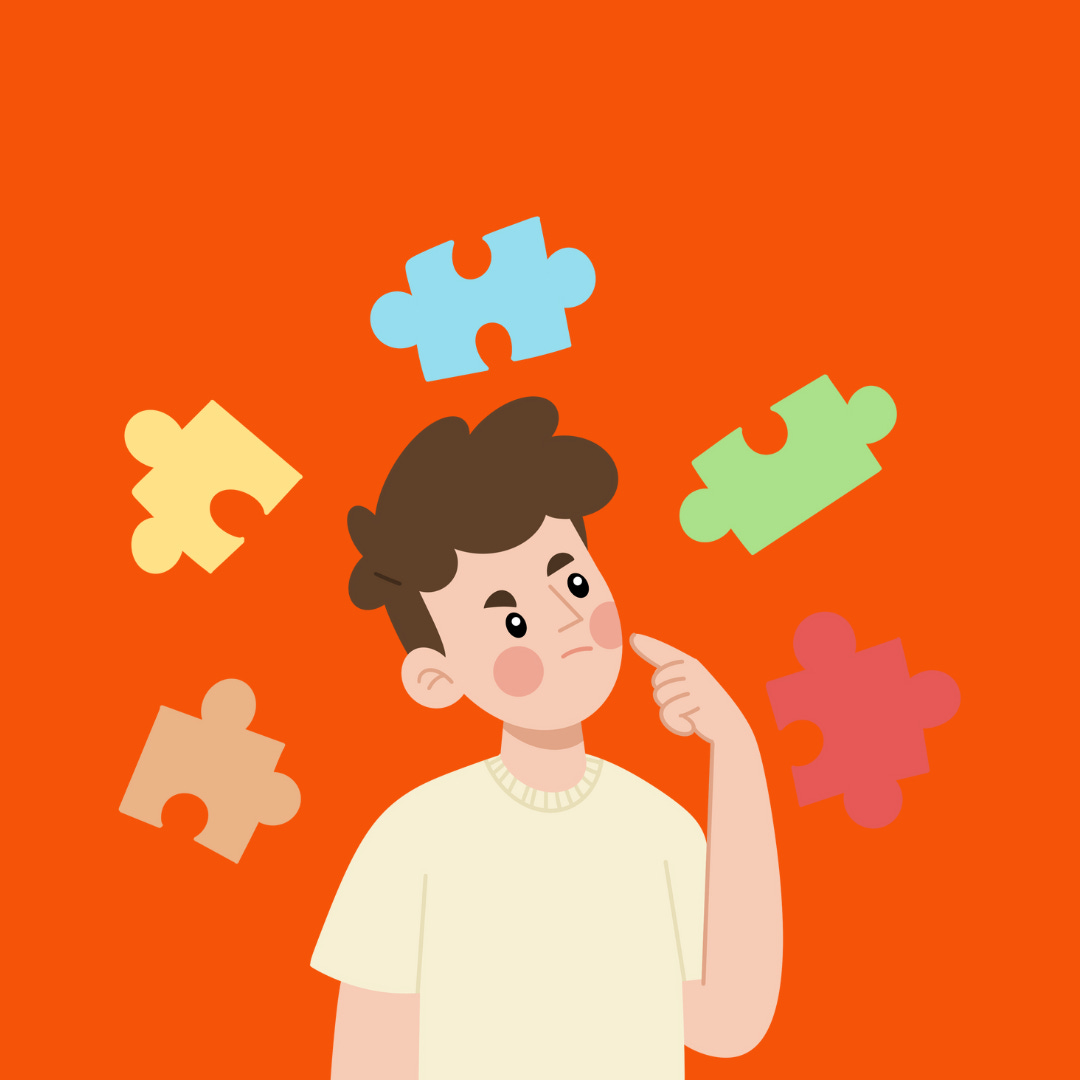12 ideas about education that get me out of bed in the morning 🌅
And keep me up at night 🌚
Hey, it’s Harrison 👋 Welcome to my publication about creativity as a tool for personal and professional growth.
If you're a high-achiever ready to make a major life or career shift through a creative project, I offer 1:1 coaching to help you navigate that transformation. If you’re interested in how I can support you, you can learn more about me and then send me an email and we’ll set up a call to chat.
12 ideas about education that get me out of bed in the morning
Hey subscribers,
Over the last few months you may have noticed I’ve gone down a rabbit hole of education research. (If you missed any of it, you can read this, this, this, this, this or this.)
I’ve been getting to grips with key ideas in developmental psychology, learning science, experimental economics, pedagogy, and more.
But it’s all too much to hold in my head. And if I wait till I’ve made sense of it all (is that even possible?), I may be waiting forever.
Worst of all, I’ll never get to share it!
So, this week’s post is therefore less an essay and more a constellation of ideas, tensions, and nuggets of insight that together form a picture of what I’ve been learning about.
Think of it as an open notebook. The ideas are in orbit rather than in order.
1. The brain learns using what it has already learned
In How People Learn, Bransford and colleagues show that learners are never empty vessels; they come in with powerful preconceptions and assumptions that shape everything new they encounter. To learn something deeply, then, we first need to surface and test those preconceptions.
It means good teaching begins with curiosity about what the learner already understands and believes.
This has changed my whole perspective on “assessments.” Assessments are necessary for figuring out how people already see the world, for creating a dialogue rather than passing judgment.
2. The explore-exploit dilemma is everywhere
Lately I can’t stop seeing the explore–exploit dilemma. It’s the tension between trying new things (exploring) and making the most of what you already know (exploiting).
But it’s also a constant feature of human development and thriving:
In politics, we could say that liberals explore while conservatives preserve
In our youth, we explore identities and later exploit what we’ve found
Even in a single hour, we are faced with the choice: “Should I read something new? Or deepen what I already know?”
Explore-exploit might be the master tension underlying other tensions like chaos and order, freedom and responsibility, individualism and collectivism.
This paper claims to have found a “solution” to the explore-exploit dilemma. But I’m sceptical. Is it really a problem we can solve once and for all? Or is it a relationship we must learn how to navigate our whole lives?
3. Erikson’s developmental map
When psychoanalyst and visual artist Erik Erikson outlined his eight psychosocial stages1, one in particular caught my attention: identity vs. role confusion.
Teenagers, he said, face a crisis between exploring who they might become and committing to a role (Do adults ever suffer with this? Asking for a friend, lol). It’s a perfect psychological mirror of explore–exploit.
The quality of that early exploration (how safely we can try, fail, and reflect) shapes the rest of our life. Which makes me wonder: What would it mean to design schools around the healthy navigation of life’s core tensions?
4. Education as a system of flow
Education, like the rest of life, is full of these interesting tensions, which often make me feel like I need to choose between one way or another…
Instruction vs. induction — should we teach content or cultivate curiosity?
Teacher-led vs. learner-led — who owns the process?
Efficiency vs. depth — breadth of coverage or depth of understanding?
…but, the best systems, I think, flow between these poles. They integrate instead of segregating. What does learning look like when it transcends these dichotomies?
5. Learning environments as ecosystems
Much of the education research describes four dimensions of great learning environments:
Learner-centred. Start from what students already know and care about (this is point 1 above).
Knowledge-centred. Organise content around key concepts, not scattered facts.
Assessment-centred. Provide continuous feedback, not just end-of-term grades (point 1 again).
Community-centred. Embed learners in supportive networks of peers and mentors; ideally multi-aged networks, as humans evolved to be coached by those a little older as well as to coach those a little younger.
When these four conditions overlap, learning environments begin to resemble living systems instead of factory lines.
6. Incentives, motivation, and the paradox of paying kids to learn
Economist Roland Fryer’s experiments in hundreds of American schools found something strange: paying students for outputs (like grades) didn’t help, but paying them for inputs (like reading books) did.
Why was this the case? Because many students don’t yet know how to convert effort into results. They don’t understand the “educational production function.” Incentivising inputs builds habits that later translate into intrinsic motivation. (I wrote a deep dive on Fryer’s experiments here.)
The headline is that inputs-based incentives raised reading comprehension by the equivalent of two-and-a-half extra months of schooling!
But the deeper question is: what happens when the payments stop? Fryer’s follow-up studies suggest effects fade, but not disastrously.
Prehaps incentives are like bicycle stabilisers. Useful for getting you going, but questionable if never removed.
7. Vertical vs. horizontal incentives
Another Fryer study compared horizontal incentives (rewarding one person for multiple things like attendance, homework, and behaviour) with vertical incentives (rewarding the student, parent, AND teacher for one shared goal).
Horizontal incentives improved both maths and reading; vertical ones boosted maths but harmed other subjects. Students and teachers, it turns out, treated different subjects as substitutes rather than complements.
The lesson here is that incentives work like magnets. They attract attention but also pull it away from other things. Incentives are clearly powerful but they need to be designed carefully.
8. The mystery of transfer
One of the hardest questions in education is: Why don’t students apply what they learn in one context to another? Research suggests transfer requires conceptual frameworks, not just facts.
We don’t remember lessons; we remember models. Teaching is therefore largely about helping learners build internal maps of how knowledge can hang together.
A super simple illustrative example: Researchers asked a bunch of post-grads (aged 20+) to view a conveyor belt of random objects and later try to remember as many of the objects as they could. The researches also asked a bunch of 12-year-olds to do the same exercise. The 12-year-olds remembered far more objects than the post-grads, not because they were smarter, obvs, but because they were told the objects fitted into categories such as fruit, toys, animals, etc. Without this organising model, the post-grads remembered much less.
9. Teachers as designers, not deliverers
“Teachers must draw out and work with the pre-existing understandings that students bring with them.”
That single line from How People Learn could rewrite teacher training.
What if the teacher’s role isn’t to fill but to notice, and to design conditions in which thinking becomes visible? That, as far as I can tell, is a creative act, closer to art direction than instruction. The best teachers are artists and designers!
10. Learning as a family practice
As I think about having children of my own—and as me and Corina think about building a home in Spain—I’m starting to get curious about what makes a home a good learning environment.
How People Learn says that parents are naturally good at connecting new ideas to lived experience, often better than teachers who don’t share their child’s world. Maybe the most radical educational reform is to extend this intimacy, to make schools feel more like families and families feel more like learning partners.
11. Lifelong learning for teachers
If teachers are to create lifelong learners, they must become them. Professional development should be less about “updating skills” and more about cultivating curiosity and frameworks for self-directed growth. Imagine a school where teachers had sabbaticals for exploration, not just training days for compliance.
12. The social physics of learning
Learning spreads through relationships. Groups who learn by doing together often outperform formal training programmes. The learning sciences now talk about horizontal transfer between peers and distributed cognition across groups.
The classrooms, studios and workshops of the future are a network of overlapping learning communities. And on this note (personal plug), I’m thrilled to be helping
and to build such a community in Act Two and Citizens of the Internet .That’s all for now folks. I needed to get all that out of my head. If any of these ideas light something up in you, tell me tell me. Reply or share it with someone else who thinks a lot about education.
⬥
Previous post
Erik Erikson developed a theory of psychosocial development that describes eight stages spanning the entire human lifespan, each characterised by a central crisis or conflict that must be resolved. A summary of the eight stages:
Infancy (0-1 year): Trust vs. mistrust The infant learns whether the world is safe and dependable based on the consistency of care they receive. Successful resolution leads to hope and trust in others.
Early childhood (1-3 years): Autonomy vs. shame and doubt Toddlers develop a sense of personal control and independence. Success leads to feelings of autonomy, while failure results in shame and self-doubt.
Preschool (3-6 years): Initiative vs. guilt Children begin to assert power and control through directing play and social interaction. Success leads to initiative, while excessive control or criticism can lead to guilt.
School age (6-12 years): Industry vs. inferiority Children develop competence through mastering new skills and knowledge. Success leads to confidence, while failure can result in feelings of inferiority.
Adolescence (12-18 years): Identity vs. role confusion (or role diffusion) Teenagers explore who they are, experimenting with different roles, beliefs, and identities. Successfully navigating this stage results in a strong sense of self, while failure leads to role confusion about one’s place in society.
Young adulthood (18-40 years): Intimacy vs. isolation Young adults form intimate, loving relationships with others. Success leads to strong relationships, while failure results in loneliness and isolation.
Middle adulthood (40-65 years): Generativity vs. stagnation Adults establish careers, settle down, and contribute to society through raising families or being productive at work. Success brings feelings of usefulness and accomplishment, while failure produces stagnation.
Late adulthood (65+ years): Integrity vs. despair Older adults reflect on their lives. Those who feel they’ve lived well develop integrity and wisdom, while those with regrets experience despair.
Erikson believed that each crisis doesn’t disappear once resolved but continues to influence development throughout life, and that successfully navigating earlier stages provides a stronger foundation for later ones.






Love this!
Fascinating. I know that feeling of having too many brilliant ideas orbiting without a clear path. How do you decide which one to land first?